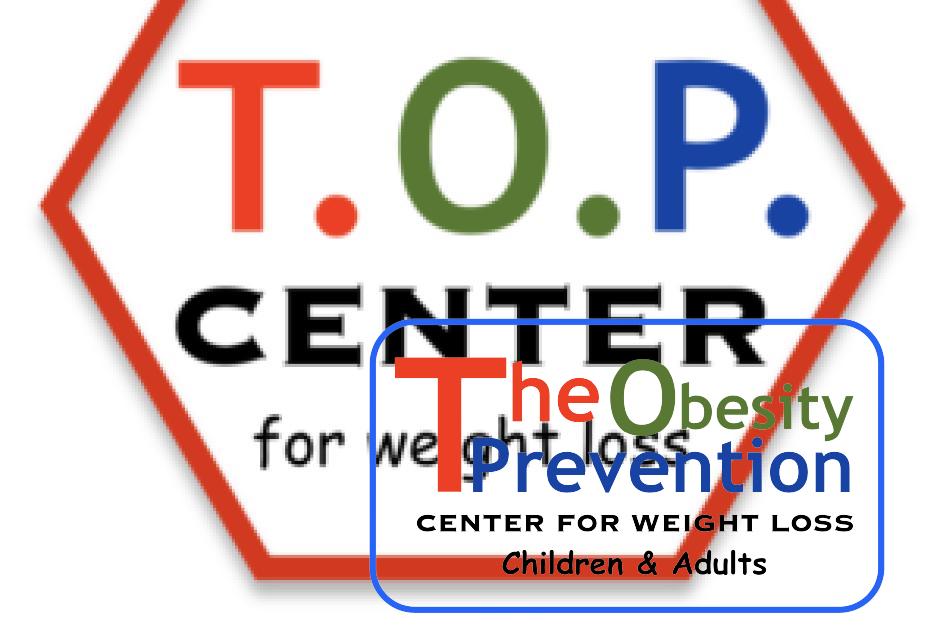Childhood obesity is an epidemic in the United States, impacting children’s health, wellbeing, and future potential. It is a multifactorial problem, influenced by a complex interplay of genetics, environment, lifestyle, and certain medical conditions. With figures rising at alarming rates, it’s more crucial than ever to comprehend all aspects of childhood obesity and take meaningful action to combat this crisis. This paper set out to provide an in-depth look at the urgency of the problem, consequences of childhood obesity, the essential role of nutrition, significance of regular physical activity, and the importance of fostering a supportive environment for promoting healthy habits.
Understanding childhood obesity
Understanding Childhood Obesity
Childhood obesity is a severe medical condition that affects children and adolescents. It occurs when a child is well above the normal or healthy weight for their age and height. According to the Centers for Disease Control and Prevention, approximately 18.5% of children in America, aged 2 to 19, are obese. This translates to more than 13.7 million children suffering from obesity. It poses alarming health concerns as it’s not only a physical health issue, but it’s also linked to poor mental health outcomes.
Childhood obesity is largely linked to an imbalance between caloric intake (too high) and caloric expenditure (too low). Contributing to this imbalance are unhealthy diets rich in sugar and fats, and lack of physical activity due to an increasing sedentary lifestyle. While particularly relevant in the context of Western diets and behavior patterns, these issues affect virtually all modern societies.
Main Causes of Childhood Obesity
Several factors play a role in childhood obesity. Genetics, environmental factors, lifestyle preferences, and certain health conditions and medications are among the things that can lead to excessive weight gain in children.
Genetics can directly cause obesity in disorders such as Bardet-Biedl syndrome and Prader-Willi syndrome. If parents or other close relatives are obese, a child has a higher risk of becoming obese. Behavior and lifestyle also play huge roles, such as unhealthy eating habits and physical inactivity.
On the matter of environmental issues, the setting a child resides in can significantly influence their chances of becoming obesity. For instance, if a child lives in an environment with limited safe places to walk or play, they may be less likely to engage in physical activities, thus increasing their chances of gaining weight.
Establishing Healthy Habits to Curb Childhood Obesity
Nipping it in the bud – prevention of childhood obesity lies in fostering healthy habits. Here are few methods that can be adopted to counter obesity:
- Nutritious Diet: Promote the habit of healthy eating by incorporating more fruits, vegetables, and whole grains in their daily meals. It is equally important to limit the intake of fats and sugars.
- Physical Activity: Introduce physical activities as part of kid’s daily schedule. This can be through games, sports they love or simply by walking down to the school if it’s safe and nearby.
- Limiting Screen Time: It is advisable for parents to limit their child’s time spent on inactive pastimes, such as watching television or playing video games, and instead promote more physical activities.
- Adequate Sleep: Sleep plays a crucial role in a child’s health. Inadequate sleep can increase the risk of gaining excess weight for your kid.
Promoting an environment that encourages healthy behaviors, educating about the benefits of wholesome food and regular physical movements, and setting the example as a parent by embracing healthy habits – these are effective strategies for preventing childhood obesity.

Consequences of Childhood Obesity
The Immediate Impact of Childhood Obesity
Childhood obesity can result in several health complications, some of which are instantly recognizable. Prediabetes, where blood sugar levels rise indicating a higher risk of developing type 2 diabetes is among the most common. Additionally, childhood obesity can increase the risks of high cholesterol and high blood pressure, eventually leading to heart ailments, conditions that were previously seen only in adults.
Another immediate impact is the emergence of sleep disorders. Obesity in children has been linked to conditions like sleep apnea, which is characterized by irregular breaths during sleep and can at times lead to heart failure. Besides these health risks, facing constant ridicule and bullying from peers can lower the self-esteem of an overweight child, leading to psychological distress.
Long-term Consequences of Childhood Obesity
Childhood obesity can extend into adulthood, leading to a series of long-term physical consequences. Obese children have a higher chance of growing into obese adults and are more susceptible to various health problems like heart disease, type 2 diabetes, stroke, several types of cancer, and osteoarthritis.
Particularly alarming is the increasing cases of early-onset, type 2 diabetes in children, preceded by insulin resistance caused mostly by obesity. Untreated, this can escalate into serious complications, including kidney failure, blindness, and nerve damage.
Psychological and Societal Consequences
Childhood obesity can be damaging to mental and emotional health, laying a foundation of body dissatisfaction, which developmentally hits its peak during adolescence. They frequently suffer from lower self-esteem, social isolation, and are more prone to depression, behavior problems, and poor school performance.
Children’s social experiences are also largely influenced by their physical appearances. Obese children often encounter negative social bias, discrimination, and prejudice. This can limit their friendships, leaving them socially isolated, which further impacts their self-esteem and mental health.
Promoting Healthy Habits to Prevent Childhood Obesity
Adopting an array of healthy habits is essential for preventing childhood obesity. This includes kindly encouraging children to consistently consume a diet rich in fruits, vegetables, lean proteins, and whole grains, while curbing their intake of processed and high-sugar foods. Along with optimal nutrition, kids should be engaged in at least 60 minutes of moderate to vigorous physical activities every day in the form of play, cycling, swimming and more.
Parental involvement acts as a cornerstone in managing overweight issues in children. Embodying healthy lifestyle choices, parents should actively model proper attitudes towards food and exercise for their kids. Shifting the child’s focus from screens to physical play is another effective strategy, supplemented by regular check-ups to monitor their growth and weight. Creating a conducive environment in schools through nutritious meals and physical education is equally important and helpful in the long run.

The Role of Nutrition in preventing Childhood Obesity
Emphasizing on Balanced Diet: A Key to Combating Childhood Obesity
The significance of a well-rounded and nutritious diet in preventing childhood obesity is incomparable. Regular intake of food categories like fruits, vegetables, lean proteins, and whole grains helps children in maintaining a healthy weight, while simultaneously supplying all the vital vitamins, minerals, and nutrients necessary for their growth, energy, and overall well-being, albeit without the extra calories.
Understanding the difference in quality of calories is crucial. High-calorie fast food or processed snacks may be appetizing, but they fail to supply the necessary nutrients a growing child needs. In contrast, nutrient-dense foods like fruits and vegetables might be lower in calories but are profoundly rich in essential vitamins and minerals. Thus, steering children towards these healthier food options, rather than empty-calorie snacks, is of utmost importance.
How to Make Healthier Food Choices That Taste Good
Making healthier food choices can be a challenging task, especially if the child is used to consuming junk food. Parents should gradually incorporate healthier foods into the menu. To do this successfully, parents can substitute whole grains for white bread and rice, increase the amount of vegetables in meals, and select lean meats over fatty cuts.
To make these healthy foods more appealing to children, parents can use a variety of cooking methods, such as roasting vegetables for a sweeter taste or adding herbs and spices for extra flavor. Parents can engage children in cooking and food preparation, as this might increase the child’s willingness to try new foods.
Portion Sizes, Meal Planning, and Family Mealtime
Understanding portion sizes is another crucial factor in managing and preventing childhood obesity. Serving appropriate portion sizes can help children understand how much they should eat. Simple strategies, such as using smaller plates, can help control portions.
Meal planning is an effective way to ensure children get a variety of nutrients over the course of a week while also preventing overeating. Planned meals make it easier to incorporate a mixture of fruits, vegetables, whole grains, and lean proteins.
Moreover, making mealtime a family activity helps to establish healthy eating schedules which is effective in preventing unhealthy snacking and overeating. It also allows parents to model healthy eating behaviors that children can mimic.
Reducing Sugary Drinks and Processed Foods in Children’s Diets
One of the leading causes of childhood obesity is excessive consumption of sugary drinks and processed foods. These items are often high in calories and have low nutritional value. Swapping out sugary drinks like sodas and juices with sugar-free alternatives or water can have a significant impact on children’s overall calorie intake.
When it comes to processed foods, parents should be wary as these are typically high in sodium, unhealthy fats, and added sugars. Instead, choosing fresh, whole foods or even making homemade versions of the child’s favorite meals can be a healthier and tastier choice. Reading nutritional facts on food labels can help parents make healthier food selections when shopping.
Introducing Lifelong Healthy Habits for a Better Future
Introducing and reinforcing healthy habits can indeed be a task demanding effort, patience, and consistency. Yet, it’s worth noting that these principles go beyond the realm of preventing childhood obesity, they also lay the bedrock for setting children on a trajectory towards a lifestyle filled with healthy eating habits and a well-balanced life.

Importance of Regular Physical Activity
Physical Activity: A Key Player in Combating Childhood Obesity
Playing an undisputed role in maintaining a healthy weight in the young population, physical activity holds significant importance. It’s suggested by the Centers for Disease Control and Prevention (CDC) for children aged between 6-17 to indulge in at least 60 minutes of moderate to vigorous physical activities daily, an essential guideline to mitigate obesity risks, type 2 diabetes, and other related health complications in the United States.
However, physical activity doesn’t solely mean engaging in structured sports. It can be as simple as playing in the park, swimming, taking a walk, cycling, or pitching in with household chores – all of which can remarkably elevate a child’s level of physical activity. Besides burning calories and reducing body fat, these activities also contribute to muscle development while enhancing heart health and bone strength outputs, rendering long-lasting benefits.
Benefits of Different Types of Exercises
Typically, children’s exercise comprises aerobic activities, muscle-strengthening activities, and bone-strengthening activities. Each type of exercise contributes differently to the overall health and development of a child.
Aerobic activities, such as jogging, swimming, or dancing, increase the child’s heart rate and breathing. This helps to promote a healthy heart and lungs while burning calories and reducing fat stores.
Muscle-strengthening activities, such as climbing or playing tug-of-war, aid in building and maintaining stronger muscles. This increases the amount of muscle relative to fat, resulting in a healthier body composition.
Bone-strengthening activities, like rope skipping or gymnastics, promote the development of strong bones which contributes to a healthy skeletal structure, reducing the risk of bone diseases later in life.
Fun Physical Activities: A Key to Prevent Childhood Obesity
Instilling a love for physical activity in children at a young age can be a powerful strategy to prevent obesity. The best way to spark that interest isn’t by forcing a rigid gym routine, but by including diverse playful activities that are age-appropriate and intriguing for the child. Involving adults in these activities not only makes them more enjoyable for the child, but also sets a role model for them to emulate.
Remember to select exercises the child already shows a liking towards like dancing, outdoor sports, or hiking. The essential factor is to ensure they are active.
In today’s digital age, adding a techie twist to physical activities with motion-sensor video games or children’s fitness apps can make them more appealing for kids.
Lastly, it’s crucial to set realistic expectations of success in these activities. Focusing more on their participation and effort rather than the outcome can help foster a lifelong positive perspective towards physical activities.

Creating a Supportive Environment for Healthy Habits
The Crucial Parental Role in Preventing Childhood Obesity
Parents are the primary influencer in a child’s life, including setting the foundation for healthy habits. Incorporating nutritious meals and habitual physical activity in the family routine instills good health and fitness standards from a tender age. Strive for balanced meal provisions- whole grains, proteins, fruits, and a variety of vegetables. Substituting water for sugary beverages is another effective method for reducing unnecessary calorie intake.
Beyond diet, taking steps to deter a sedentary lifestyle is crucial. Limiting screen time and including activities like walking or biking as part of the daily routine can induce a proclivity for physical activity. Dedicate a part of each day to be a screen-free zone to encourage more active play.
Schools’ Responsibility in Combatting Childhood Obesity
Schools can also play an integral role in tackling childhood obesity. School meal programs should strive to abide by federal nutrition guidelines, focusing on providing balanced and nutritious meals. Schools can also offer healthier options in vending machines, replacing sugary snacks and drinks with healthier alternatives.
Schools should emphasize the importance of physical education in their curriculum. Students should be encouraged to participate in regular physical activity, whether it’s during PE classes, recess, or after-school sports clubs.
In addition, schools can incorporate health education into their curriculum, teaching students about good nutrition, the importance of staying active, and the harmful effects of unhealthy lifestyle choices.
How the Larger Community Can Help Prevent Childhood Obesity
Communities can support parents’ and schools’ efforts by offering programs and opportunities that encourage healthy habits. Community centers can offer physical fitness classes for different age groups and organized sports teams can provide regular activity.
Community spaces should be equipped with parks and play spaces to encourage children to take part in play-based physical activity. Safe walking and biking routes in neighborhoods can help families incorporate physical activity into their daily lives.
Community organizations can provide nutrition and cooking classes to educate families about healthy food choices and preparation techniques. They can also support food-insecure households by offering affordable or free access to fresh produce and healthy food options.
Promotion of Long-term Behavioral Changes
The fight against childhood obesity doesn’t end with short-term interventions. One-off diet changes or temporary activity spurts won’t sustainably improve a child’s health. Instead, long-term behavioral changes are needed.
Teaching children and families about the importance of balanced nutrition and physical activity can foster lasting habits. Regular check-ups with healthcare providers can track the child’s progress over time and address any problems or concerns. In the long term, firm habitual changes are the real solution to the problem of childhood obesity.
Cultivating a supportive environment for these changes from multiple fronts – home, school, and community – can make a significant difference in preventing childhood obesity. Everyone has a role to play in promoting healthy habits and breaking the obesity cycle.

Taking this journey through the complex world of childhood obesity emphasizes the multidimensional nature of this unhealthy trend. Despite the numerous challenges, however, there are practical and promising solutions at our disposal. It begins with education; understanding the importance of a balanced diet and regular physical activity is crucial for maintaining a healthy weight and preventing obesity. Fostering a supportive environment at home, school, and in our communities wherein healthy habits can nourish is essentially important. Only by approaching obesity prevention holistically, we can truly make strides toward a healthier future for our children. Let’s all commit to being part of the solution in this fight against childhood obesity.
Writio: AI writer for engaging content. This article was written by Writio.
Thank you for reading this post, don't forget to subscribe to our free newsletter
!
